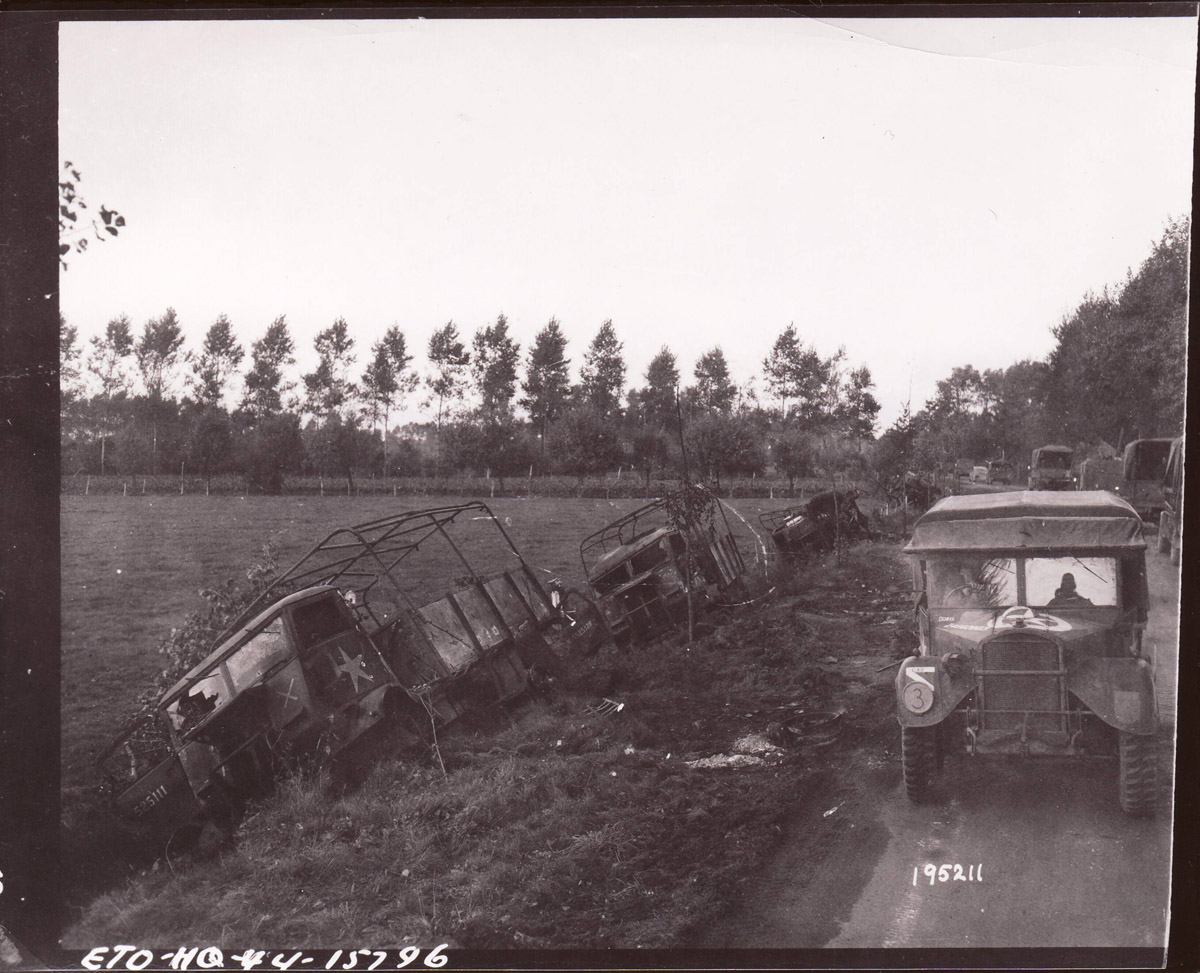Eindhoven
Eindhoven is liberated by the 506 Parachute Infantry Regiment of the 101st Airborne. Around midday, they link up with XXX Corps reconnaissance units but they have to wait a long time for the main body to enter Eindhoven.
XXX corps did not have an easy day, the Germans put up a good fight to delay them and a number of 88mm guns had to be dealt with before they could enter Eindhoven. The Coldstream Guards tried to find alternative roads into Eindhoven thus widening the corridor but the bridges across the various waterways did not support tanks making this impossible. Not before 16:30h are the tanks entering Eindhoven.
They head for Son as soon as possible but crowds of excited Dutch citizens made quick movement north virtually impossible. At Son, the engineers immediately start repairing the bridge.
The 502nd PIR is caught up in heavy fighting at Best where they try to capture the road bridge over the Wilhelmina Canal, thus allowing the ground troops to bypass the blown bridge at Son. The Germans, however, blow the bridge around 11:00hrs and having a strong garrison and a lot of reinforcements at Best means that a big battle erupts eventually involving the entire 2nd and 3rd battalion of the 502nd Parachute Infantry Regiment.
During this battle, the 101st Airborne gets its much needed reinforcements when the second lift arrives which land on the edge of the battlefield. Elements of the 327th Glider Infantry Regiment are used almost as soon as they get out of their gliders.
The 1st battalion 502nd PIR is still guarding Sint Oedenrode where the Germans made some probing attacks.
During the night the defenders of Veghel are tested for the first time, around 300 Germans sneak up through the fog along the canal from ‘S-Hertogenbosch and try to regain control of the railway bridge. They are eventually stopped but at a heavy cost, C Company 501PIR is decimated.
Nijmegen
The 82nd in Nijmegen tried desperately to seize the road bridge at Nijmegen but all attempts are thwarted by the Germans. Around Groesbeek they have to stop heavy German counterattacks which threaten to take over the landing zones where troops and supplies would land later that day. In the nick of time, they clear them allowing the gliders to land in relative safety.
An effort is made to seize another crossing over the Maas-Waal Canal, the Neerbosch or Honinghuite Road and Rail bridges. Although the bridges are taken by storm by elements of the 508th and 504th Parachute Infantry Regiments, the Germans manage to set off demolition charges which destroy the rail bridge and severely damages the road bridge. The bridge is later deemed too weak to carry XXX corps so all traffic has to pass the lock bridge at Heumen.
Arnhem
Heavy fighting is going on in and around Arnhem. The troops from 2nd Battalion, 1st Parachute brigade which captured the Northern approach of the road bridge are under constant attack by the Germans but the men beat back attack after attack. Early in the morning, they receive their first and only reinforcements, B company 2nd battalion arrives after spending the night at the pontoon bridge a 100 yards from the road bridge. John Frost’s force is now around 750 men.
On the Ginkel Heath, 15km from the bridge lands the 4th parachute brigade under Brigadier Hackett in the middle of a raging battle as the 7th KOSB tries desperately to clear the drop zone. With the help of the 4th brigade, the Germans are quickly taken care of.
The rest of the division attempts to reach the men at the bridge but fail to break through. Already the Germans have set up strong blocking lines between the main part of the division and the men fighting at the bridge.




